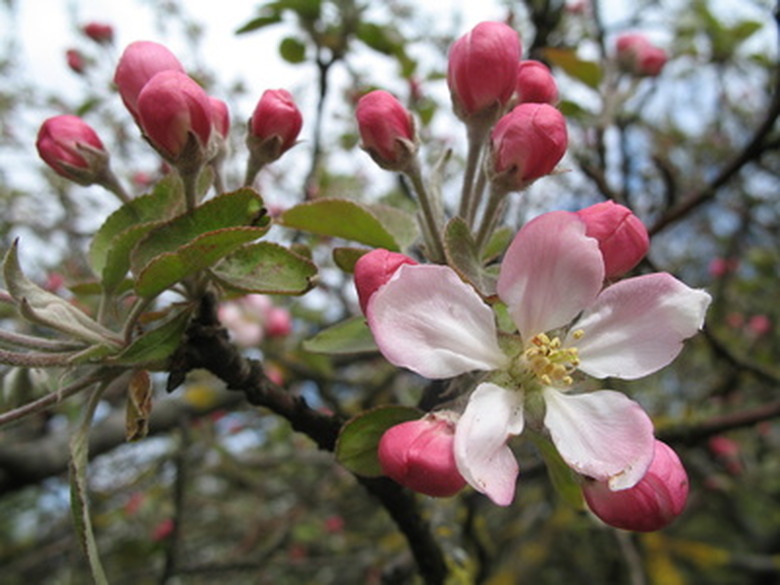Fruit Trees For Ohio
The climate of Ohio is well-suited for growing fruit trees. Fruit trees require a period of chill dormancy each year, and Ohio winters provide ample cold temperatures. Select trees according to the USDA temperature hardiness zone where you live. Southern Ohio is zone 6, and the central and northern areas are zone 5. Plant fruit trees as landscaping elements as well as additions to the garden. The blossoms are very attractive in the spring, and the fall foliage can be striking. Standard size trees can be used as shade trees, and dwarf trees can be used to replace ornamental shrubs in landscaping design.
- The climate of Ohio is well-suited for growing fruit trees.
- The blossoms are very attractive in the spring, and the fall foliage can be striking.
Apples
Apple trees thrive throughout Ohio. Golden Delicious are the best pollinators for most other apple trees, so include a Golden Delicious tree for this purpose–and, of course, for the superb apples the tree produces. Other apple varieties to plant are the traditional Red Delicious, Rome Beauty, Jonathan, Stayman and McIntosh. Two new apple crosses are Franklin and Melrose. Ohio can be home to nearly any apple variety.
Peaches and Nectarines
Peaches and nectarines are alike in every way except for the fuzz on peach skin that is absent from nectarines. Peaches and nectarines are self-fertile and do not require another variety for pollination. Peach and nectarine trees are rather tender and may suffer damage from extreme winter conditions. Late spring frosts and freezes can kill the blossoms on an entire tree, killing the crop for that year. Red Haven, Belle of Georgia and Reliance are reliable peach varieties for Ohio. Hardy nectarine varieties are Mericrest, Red Gold and Summer Beaut. These varieties offer a blend of early, mid and late season varieties. They bloom at different times, so if a late frost damages one variety, it might miss another.
- Apple trees thrive throughout Ohio.
- Peaches and nectarines are self-fertile and do not require another variety for pollination.
Plums
Of the three types of plums, the European plums are the best suited to Ohio's climate. This includes Stanley, Green Gage, and Fellenberg types. These plums are good for eating fresh. Use them for canning or freezing, baking or drying into prunes. Stanley plum trees are self-fertile. Stanley trees are also good pollinators for the other varieties of plums, which are not self-fertile.
